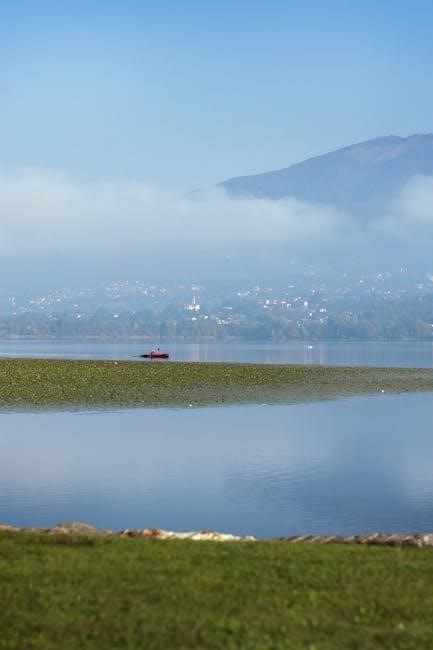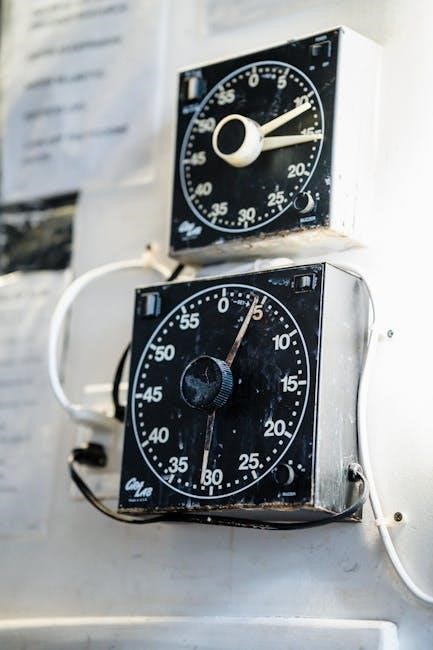VRChat Game Manual: A Comprehensive Guide (Updated 11/21/2025)
Welcome! This manual, updated today, 11/21/2025, provides a comprehensive guide to navigating, creating, and enjoying the vast universe of VRChat experiences.

What is VRChat?
VRChat is a free-to-play massively multiplayer online virtual reality social platform; It’s a unique blend of gaming, social media, and creative expression, allowing users to interact with each other as 3D avatars in user-created worlds.
Imagine a space where you can be anyone, go anywhere, and do almost anything – that’s VRChat. The platform boasts tens of millions of avatars, empowering anyone to design and embody their ideal self. Beyond avatars, users can explore or construct incredible virtual environments, ranging from cozy rooms to expansive landscapes.
VRChat isn’t just a game; it’s a community. It’s a place to connect with friends, make new ones, attend events, and express your creativity. Whether you’re seeking social interaction, artistic exploration, or simply a new way to experience the internet, VRChat offers a diverse and evolving experience.
Getting Started: Installation & Login
Embarking on your VRChat journey is remarkably straightforward! Simply install the application on your preferred platform – currently available for Windows and via SteamVR for various headsets. The installation process is quick and easy, guided by on-screen prompts.
Upon launching VRChat for the first time, you’ll be prompted to log in. You have two convenient options: utilize your existing Steam account for seamless access, or create a dedicated VRChat account. Both methods provide equal access to the full VRChat experience.
New users are greeted with an in-app tutorial, a fantastic resource for mastering basic controls, interacting with the virtual world, and navigating the user interface. Don’t hesitate to explore this tutorial – it’s designed to get you comfortable quickly!
Account Creation: Steam vs. VRChat Account
Choosing the right account method is a key first step. Utilizing your existing Steam account offers a streamlined login process, leveraging your established Steam profile and friends list for easy connection within VRChat. This is the most common and recommended method for most users.
Alternatively, creating a dedicated VRChat account provides a degree of separation from your Steam profile. This option might appeal to users prioritizing privacy or those who prefer a distinct VRChat identity. However, it requires a separate registration process.
Regardless of your choice, both account types grant full access to VRChat’s features and content. The decision ultimately depends on your personal preference and desired level of integration with Steam.

Navigating the VRChat Interface
Familiarizing yourself with the VRChat interface is crucial for a smooth experience. Upon launching VRChat, you’ll encounter a hub world, serving as your gateway to countless user-created environments. The interface features a prominent search bar for discovering worlds and avatars, alongside quick access buttons for friends, events, and your profile.
The main menu, accessible via the VRChat icon, provides settings for audio, video, controls, and safety. Understanding these settings allows for customization to optimize performance and personalize your experience. The in-app tutorial guides new users through these core functionalities.
Mastering the interface unlocks the full potential of VRChat’s social and creative features.
Understanding the User Interface (UI)
The VRChat UI is designed for intuitive exploration and social interaction. Key elements include the quick menu, accessed by pressing your grip buttons, offering options for emotes, microphone control, and avatar actions. The VRChat menu, opened via the VRChat icon, manages settings, friends lists, and world discovery.

The bottom of the screen displays notifications and chat windows, facilitating communication with other users. Pay attention to the world’s UI, often customized by creators to provide unique interactive elements. Learning to interpret these visual cues enhances your immersion.
Effective UI navigation is fundamental to enjoying VRChat’s diverse experiences.
Basic Controls & Interactions
Mastering basic controls unlocks VRChat’s full potential. Movement utilizes WASD keys, with spacebar for jumping. Utilize your mouse for camera control and looking around. Grip buttons activate the quick menu, essential for emotes and actions. Voice chat is enabled by default, but can be toggled.
Interacting with the world involves pointing and clicking, or using hand gestures recognized by the environment. Experiment with different interactions – worlds often feature unique mechanics. Remember the in-app tutorial guides you through these fundamentals.
Practice these controls to seamlessly navigate and engage within VRChat’s dynamic spaces.

Avatar Creation: An Overview
VRChat boasts an incredible diversity of avatars, and you can contribute! Creating your unique persona is a core part of the experience. There are two primary paths: utilizing simplified avatar creation tools, or diving into the more complex world of Unity and the VRChat SDK.
Tools without Unity offer a streamlined approach for beginners, allowing quick avatar customization. However, for truly unique and detailed avatars, Unity provides unparalleled control. This involves importing models, texturing, and configuring parameters within the SDK.
The possibilities are limitless, from fantastical creatures to realistic representations – express yourself!
Using Avatar Creation Tools (No Unity)
For newcomers, avatar creation tools offer a fantastic entry point; These platforms bypass the need for Unity, simplifying the process significantly. They provide user-friendly interfaces for customizing pre-made base avatars, allowing you to adjust features like hairstyles, clothing, and accessories.
While offering less granular control than Unity, these tools are perfect for quickly creating a personalized avatar without a steep learning curve. Expect options for adjusting colors, adding basic animations, and potentially uploading custom textures.

It’s a great way to get into VRChat and experiment with self-expression immediately!
Creating Avatars with Unity & the VRChat SDK
For advanced creators, Unity and the VRChat SDK unlock unparalleled customization. This method demands a steeper learning curve, requiring familiarity with Unity’s interface and C# scripting, but offers complete control over every aspect of your avatar.
The SDK provides tools for importing models, rigging, animation, and implementing complex behaviors. You can design avatars from scratch or modify existing ones, pushing the boundaries of creativity. Expect to manage materials, textures, and performance optimization meticulously.
This pathway allows for truly unique and expressive avatars, but requires dedication and technical skill.
World Creation: A Beginner’s Approach
Embark on crafting your own virtual spaces within VRChat! While daunting initially, world creation is accessible with the right tools and approach. A project-based course is highly recommended, guiding you through each step of the process, culminating in a unique, finished room.
You’ll primarily utilize Unity, alongside the VRChat SDK, to construct geometry, apply materials, and implement interactive elements. Probuilder, a Unity package, simplifies the creation of custom shapes and layouts. Mastering these tools unlocks the power to build immersive and engaging worlds.
Unity & the VRChat SDK Workflow
The core of VRChat world building revolves around Unity and the VRChat SDK. Begin by creating a new Unity project, then import the latest SDK. This integration bridges Unity’s capabilities with VRChat’s specific requirements, enabling avatar and world publishing.
The workflow involves designing your world within Unity, utilizing its scene editor and asset library. The SDK provides essential tools for optimizing performance, setting up interactions, and ultimately, uploading your creation to VRChat. Understanding this interplay is crucial for a smooth development process, ensuring compatibility and a polished final product.
Probuilder for Geometry Creation
ProBuilder is a powerful Unity package ideal for rapidly prototyping and creating custom geometry within VRChat worlds. Unlike traditional modeling software, ProBuilder operates directly within the Unity editor, streamlining the design process. It allows for intuitive creation of walls, floors, furniture, and other structural elements.
This tool excels at block-out phases and iterative design, enabling quick adjustments and experimentation. While not suited for highly detailed organic models, ProBuilder is perfect for establishing the foundational layout and architectural elements of your world, significantly accelerating development and offering flexibility.
Materials & Textures: PBR Basics
Physically Based Rendering (PBR) is crucial for realistic visuals in VRChat. PBR materials react to light in a way that mimics real-world surfaces, enhancing immersion. Key components include Albedo (color), Metallic, Roughness, and Normal maps. Albedo defines the base color, while Metallic controls how metallic a surface appears.
Roughness dictates how diffuse or glossy the reflection is, and Normal maps simulate surface details without adding polygons; Utilizing PBR textures from sources like the VRChat Asset Store or creating your own ensures consistent and visually appealing results within your worlds, improving the overall experience.
Lighting & Lightmapping in VRChat
Effective lighting dramatically impacts the atmosphere of your VRChat world. Utilize a combination of real-time lights and lightmapping for optimal performance and visual quality. Real-time lights are dynamic but can be performance intensive, while lightmapping pre-calculates lighting, offering efficiency.
Bake your lighting carefully to avoid artifacts and ensure accurate illumination. Consider using a mix of directional, point, and spot lights to create depth and interest. Proper lighting enhances textures and materials, bringing your world to life and creating a more immersive experience for all visitors.

Utilizing the VRChat Asset Store
The VRChat Asset Store is a treasure trove of pre-made assets to accelerate your world-building process. From detailed props and environments to custom avatars and scripts, the Asset Store offers a wide variety of resources. Carefully review asset compatibility and performance impact before importing.
Leveraging existing assets can save significant development time, but remember to respect creator licenses and attribution requirements. Explore the store regularly for new additions and updates, enhancing your creations with high-quality, community-created content. It’s a fantastic way to expand your toolkit!
Optimization Techniques for Worlds & Avatars
Performance is crucial in VRChat for a smooth experience for all users. Optimization involves balancing visual fidelity with performance demands. Reducing polycount in models and optimizing texture sizes are key strategies. Utilize LOD (Level of Detail) groups to display simpler models at a distance.
Consider lightmap resolution and bake static lighting to reduce real-time rendering costs. Avoid excessive dynamic objects and particle effects. Regularly test your creations in VRChat to identify and address performance bottlenecks, ensuring accessibility for a wider range of hardware configurations.
Performance Considerations
VRChat performance hinges on a delicate balance. Creators must prioritize accessibility for users with varying hardware capabilities. High polycounts, large texture sizes, and complex shaders significantly impact frame rates. Real-time lighting and excessive particle effects are also performance intensive.
Regularly testing your world or avatar within VRChat is vital to identify bottlenecks. Aim for a consistent 60+ FPS on a range of systems. Remember, a visually stunning creation is less enjoyable if it causes lag or crashes for others. Prioritize optimization throughout the development process.
Reducing Polycount & Texture Size
Optimizing geometry is crucial for VRChat performance. Reducing polycount involves simplifying models, utilizing LOD (Level of Detail) groups, and employing techniques like decimation. For textures, prioritize smaller resolutions (2048×2048 is often sufficient) and efficient compression formats. Avoid unnecessarily high-resolution textures.
Baking complex details into normal maps can significantly reduce polycount without sacrificing visual fidelity. Consider using texture atlases to combine multiple textures into a single image, minimizing draw calls. Regularly assess and refine your assets to maintain optimal performance within VRChat’s constraints.
VRC Beginner Academy & Educational Resources
VRC Beginner Academy is a dedicated resource for newcomers to 3D creation within VRChat, offering accessible education in modeling and world-building. Beyond the Academy, numerous tutorials and guides are available online, covering everything from Unity basics to advanced SDK features.
Comprehensive video series, like the one currently in development focusing on a Unity-only workflow, provide project-based learning. Explore official VRChat documentation and community forums for troubleshooting and best practices. Don’t hesitate to leverage these resources to accelerate your learning journey and unlock your creative potential.
Safety & Etiquette in VRChat
Prioritizing a positive experience for everyone is crucial in VRChat. Familiarize yourself with the Community Guidelines, which outline acceptable behavior and content. Respect other users’ boundaries and be mindful of your interactions.
VRChat provides tools to ensure your safety: utilize the Reporting & Blocking features to address harassment or inappropriate conduct. Remember that while VRChat offers incredible freedom, it’s essential to practice responsible digital citizenship. Creating a welcoming environment benefits the entire community, fostering creativity and connection.
Community Guidelines

VRChat’s Community Guidelines are designed to foster a respectful and inclusive environment for all users. These guidelines prohibit harassment, hate speech, and any content that exploits, abuses, or endangers others. Respecting personal boundaries is paramount; always obtain consent before engaging in close proximity or physical interactions within the virtual space.
Content restrictions apply to sexually explicit material and depictions of violence. Adhering to these guidelines ensures a safe and enjoyable experience for everyone. Violations can lead to warnings, suspensions, or permanent bans. Familiarizing yourself with these rules is vital for responsible participation within the VRChat community.
Reporting & Blocking Users
Encountering disruptive behavior in VRChat? The platform provides tools to maintain your safety and comfort. Reporting users who violate Community Guidelines is crucial for maintaining a positive environment. VRChat’s reporting system allows you to submit detailed reports with evidence, assisting moderators in taking appropriate action.
Blocking a user immediately prevents all interaction – they cannot join your instances, send you messages, or view your profile. This is a proactive step to protect yourself from unwanted attention. Remember, reporting contributes to community safety, while blocking offers personal control. Utilize these features to curate your VRChat experience.
Exploring Existing Worlds
VRChat boasts a staggering number of user-created worlds! From relaxing beaches and bustling cityscapes to intricate game environments and recreations of beloved fictional locations, the possibilities are endless. The Discover tab within VRChat is your gateway to exploration, offering curated lists and trending worlds.
Utilize the search function to find worlds based on keywords, tags, or creator names. Don’t hesitate to jump into random worlds – you might stumble upon hidden gems! Remember to be respectful of the world’s creator and other visitors. Exploring is a core part of the VRChat experience, so embrace the adventure!
Connecting with the VRChat Community

VRChat thrives on its vibrant and diverse community! Beyond simply visiting worlds, actively engaging with others enhances your experience. Utilize the in-game friend system to connect with people you enjoy interacting with. Join public worlds and participate in conversations, events, and activities.
Consider joining VRChat-focused communities on platforms like Discord and Reddit to stay updated on events, share creations, and seek help. Remember to be respectful and mindful of others. Building relationships within the VRChat community can lead to lasting friendships and unforgettable experiences!
Troubleshooting Common Issues
Encountering problems is inevitable! VRChat can be demanding on your system, so ensure your drivers are updated and your PC meets the minimum requirements. Frequent crashes might indicate hardware limitations or conflicting software. Performance issues, like lag, can often be resolved by optimizing avatars or worlds.
If you experience login problems, verify your Steam or VRChat account details. For avatar-related issues, check for corrupted files or SDK conflicts. The VRChat documentation and community forums are excellent resources for finding solutions to common problems. Don’t hesitate to seek help!
Advanced Topics: Scripting & SDK Features
Unlock VRChat’s full potential! The VRChat SDK allows for deep customization through Unity scripting (C#). Explore features like custom events, interactive objects, and dynamic world elements. Scripting enables complex behaviors, enhancing user experiences beyond basic interactions.
Advanced users can leverage the SDK to create unique avatars with custom animations and functionalities. Understanding networking concepts is crucial for synchronized multiplayer experiences. Dive into the documentation to learn about VRChat’s API and explore the possibilities of extending the platform’s capabilities. This opens a world of creative freedom!
Resources for Further Learning

Continue your VRChat journey! VRC Beginner Academy offers comprehensive 3D creation education, perfect for newcomers. Explore the official VRChat documentation for detailed SDK information and API references. Numerous community-created tutorials on platforms like YouTube cover avatar and world building techniques.
Engage with the VRChat community forums and Discord servers for support and knowledge sharing. Don’t hesitate to seek guidance from experienced creators. Utilize the VRChat Asset Store for pre-made assets to accelerate your projects. Remember, continuous learning is key to mastering VRChat’s creative tools!








































